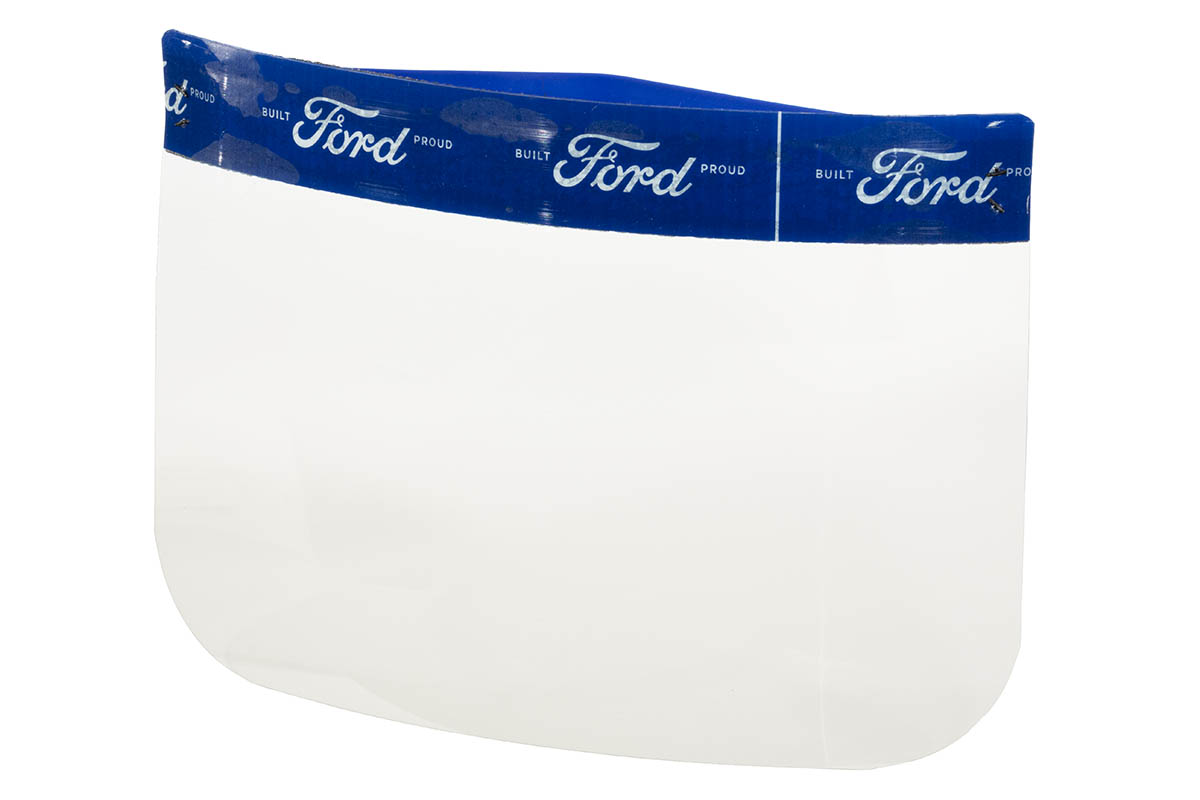Collecting the COVID-19 Pandemic
The unprecedented COVID-19 pandemic that started a year ago—and that we are still living through—is an extraordinarily significant moment in our history. It connects our nation’s past with its present and future—revealing who we were before, who we are today, and who we will become in the future.
As this pandemic began to unfold last year, museums quickly stepped forward to collect—or lay out plans to collect—evidence of it, in many different ways. The majority of these collecting initiatives were local and community-based. Curators at The Henry Ford also developed a plan describing our approach to collecting the COVID-19 pandemic. Like all our collecting plans, it reflects who we are and what we represent as an institution. This begins with our mission statement: The Henry Ford provides unique educational experiences based on authentic objects, stories, and lives from America’s traditions of ingenuity, resourcefulness, and innovation. Our purpose is to inspire people to learn from these traditions to help shape a better future.
Using the filter of the mission statement, The Henry Ford’s approach to collecting the COVID-19 pandemic includes 3D objects, photographs, and archival materials that reflect how we are being innovative, how we are being resourceful, and how entrepreneurs are using their ingenuity to both address people’s needs and remain sustainable. In keeping with the scope of our collections, items must also have national significance. Even if they are local or regional, they should align with broader patterns and national trends.
Currently, we are actively bringing items into the collection that we have saved in our basements over the past year (because of COVID-19 safety protocols), as well as collecting ongoing trends (like vaccine-related items). Here are just a few examples of our collecting to date.

Masking and social distancing quickly became new habits, as seen in these signs from Henry Ford Health System. (Future acquisitions.)
This beaded facemask, created by Diné craftswoman Brighid “Birdie” Pulskamp, features a traditional Navajo Wedding Basket design. / THF186023![Northville [Michigan] District Library curbside pickup sign Maroon-colored sign with text "Curbside Pickup: Please do not leave returned library items on this cart."](/SitefinityImages/0x0-6f695a84-d30d-6b61-be8b-ff010073bae4.jpg)
Many businesses and services adopted curbside pickup. This sign from the Northville [Michigan] District Library marked where patrons could pick up their online book requests without entering the building. (Future acquisition.)
A parody of the classic Goodnight Moon, Good Morning Zoom was created to help kids make sense of the changes in their world brought on by the pandemic. (Future acquisition.)
This wooden ornament references the shortage of toilet paper that occurred in the pandemic’s earliest days, making it a highly sought-after commodity. (Future acquisition.)
Holiday traditions took on new twists, such as this drive-thru Santa event in Bay City, Michigan. (Future acquisition.)
A facemask can be found for every holiday and occasion. (2020.104.2)
Throughout the pandemic, Dr. Anthony Fauci has been one of the most prominent medical voices updating the public on the fight against the virus. As early as April 2020—when the National Bobblehead Hall of Fame released this tribute—he was already viewed as a hero by many. (Future acquisition.)
Ford and subsidiary Troy Design & Manufacturing Company (TDM) converted Ford Transit vans into mobile COVID-19 testing units. Starting in April 2020, they took tests to health care workers and first responders—people who didn’t have to time to travel to a lab. Each van could test up to 100 people a day, and results were returned within 24–36 hours. Within a few months, the mobile testing program was extended to nursing homes, substance abuse centers, and community shelters. (2020.124.1)
Early in the pandemic, hospitals depended on scarce ventilators to treat patients with the most serious infections. Ford Motor Company employees built more than 51,000 ventilators at the Rawsonville Components Plant between April and August 2020. This unit, the last one off the assembly line, was signed by some of the 1,100 people involved in the effort. / THF185919
Health worries added to security concerns at the inauguration of President Joe Biden and Vice President Kamala Harris on January 20, 2021. Ford produced 15,000 single-use face masks and donated them to ceremony attendees. Employees at Hatteras, Inc., who printed inauguration logos on the masks, worked around the clock to get them shipped to Washington and inspected by the Secret Service in time. (2021.19.6)
Ford subsidiary TDM manufactured more than five million face shields. Elastic, to hold the shield securely on the wearer’s head, was in short supply. TDM instead used flexible automobile weather stripping, pinned to the shield with automotive fasteners. / THF185929
Disposable face masks, made at Ford’s Van Dyke Transmission Plant, were distributed free of charge to underprivileged communities, schools, food banks, and military veterans. The automaker set a goal to produce 100 million masks through 2021. / THF185913


Produced through the Amplifier Foundation, these posters acknowledge the heroic efforts of healthcare workers, and offer encouragement in the midst of upheaval. / THF621827, THF621829, THF621843
We continue to work through additional donations offered to us by the public; for more information on how to contribute to this collection, visit The Henry Ford - COVID-19 Collections. You can also see more pandemic-related artifacts in our Digital Collections, and read additional stories related to the many impacts of the COVID-19 pandemic on our blog.
Donna Braden is Senior Curator and Curator of Public Life at The Henry Ford. Rachel Yerke is Curatorial Assistant at The Henry Ford.
21st century, 2020s, manufacturing, home life, healthcare, Ford Motor Company, COVID 19 impact, by Rachel Yerke, by Donna R. Braden


Facebook Comments